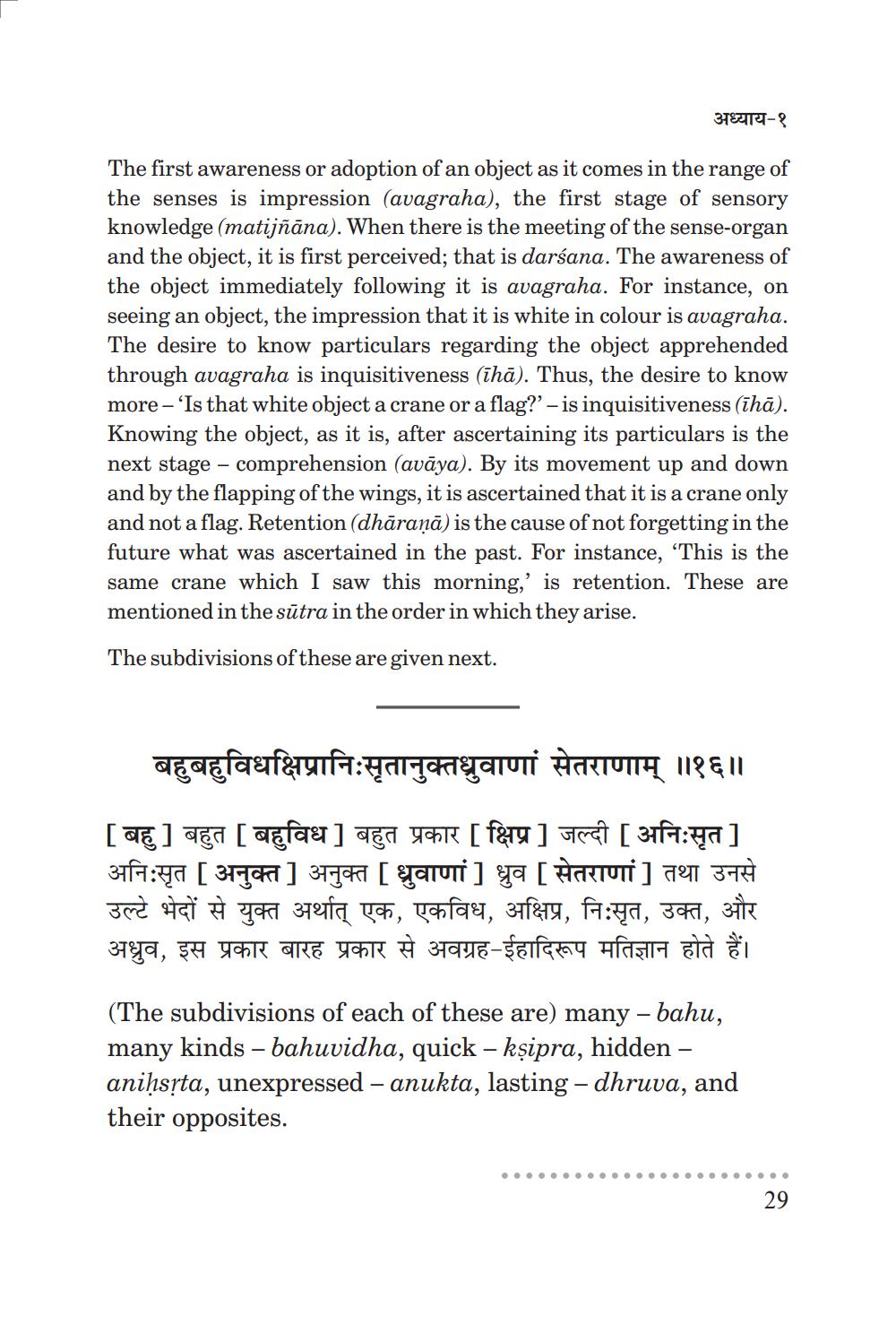________________
अध्याय-१
The first awareness or adoption of an object as it comes in the range of the senses is impression (avagraha), the first stage of sensory knowledge (matijñāna). When there is the meeting of the sense-organ and the object, it is first perceived; that is darśana. The awareness of the object immediately following it is avagraha. For instance, on seeing an object, the impression that it is white in colour is avagraha. The desire to know particulars regarding the object apprehended through avagraha is inquisitiveness (īhā). Thus, the desire to know more -'Is that white object a crane or a flag?' - is inquisitiveness (ihā). Knowing the object, as it is, after ascertaining its particulars is the next stage - comprehension (avāya). By its movement up and down and by the flapping of the wings, it is ascertained that it is a crane on and not a flag. Retention (dhāraṇā) is the cause of not forgetting in the future what was ascertained in the past. For instance, 'This is the same crane which I saw this morning,' is retention. These are mentioned in the sūtra in the order in which they arise.
The subdivisions of these are given next.
बहुबहुविधक्षिप्रानिःसृतानुक्तध्रुवाणां सेतराणाम् ॥१६॥
[ QE] qen [aplaat ] aga yor [fa] Feet [ 31f9:wa ] अनिःसृत [ अनुक्त ] अनुक्त [ ध्रुवाणां] ध्रुव [ सेतराणां] तथा उनसे उल्टे भेदों से युक्त अर्थात् एक, एकविध, अक्षिप्र, निःसृत, उक्त, और अध्रुव, इस प्रकार बारह प्रकार से अवग्रह-ईहादिरूप मतिज्ञान होते हैं।
(The subdivisions of each of these are) many – bahu, many kinds – bahuvidha, quick – kşipra, hidden - aniḥsyta, unexpressed – anukta, lasting - dhruva, and their opposites.
.
.
.
.
.
.
.
.
.
.
.
.
.
.
.
.
.
.
.
.
.
29




